A Retrospective of Squad Leader
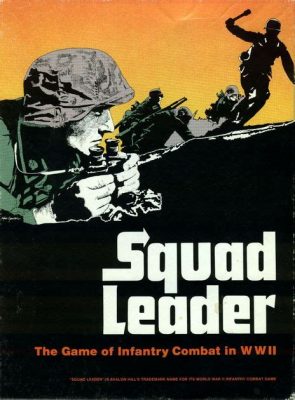 “Squad Leader is a watershed moment in war gaming, offering an unparalleled level of tactical depth and realism.” – Strategy & Tactics magazine.
“Squad Leader is a watershed moment in war gaming, offering an unparalleled level of tactical depth and realism.” – Strategy & Tactics magazine.
By Patrick S. Baker
Introduction
Squad Leader was released in 1977 by Avalon Hill and holds a significant place in the history of board gaming. Squad Leader is, perhaps, the classic tactical war-game and also perhaps is as important to war-gaming history as Kriegsspiel.
Simply put, Squad Leader set the standard for the genre by introducing groundbreaking mechanics and providing an immersive gaming experience, giving the player a real sense of commanding troops on the battlefield.
Development
John Hill, the designer of Squad Leader, graduated from Purdue University with a Bachelors degree in Military History. In the late 1960s he opened a hobby shop and founded Conflict Games Company to publish the games he developed. He published his first games in 1972. Those games were Kasserine Pass set during World War II, Verdun, The Game of Attrition, set during World War I, and The Brotherhood about Mob warfare.
During the mid-1970, Hill continued to develop and sell to other companies, or self-publish, games. These were the halcyon days of tabletop war gaming, where strategic or operation-level simulations dominated. But Hill sought to create a game that focused on the smaller, tactical aspects of combat rather than grand strategic movements.
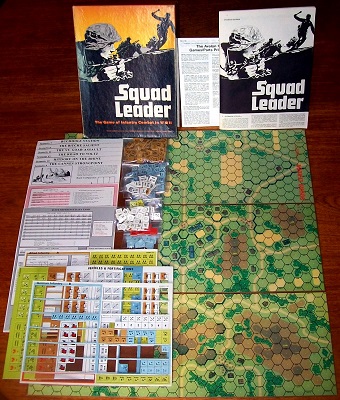
Also, at this time Hill developed an interest in traditional miniatures war-gaming. Miniatures games did not use a hex grid system to control moment or to range weapons. Instead, they involved the measurement of the actual physical distance between miniature soldiers. Miniatures had traditionally only been used for Napoleonic-era war games. However, Hill saw the potential for this type of game applied to other eras of warfare, so he developed a miniatures game set in World War II, that had squad and platoon-sized elements and individual officers.
Hill also applied a unique design philosophy to the game. He theorized that no matter the type of fire used against an infantry squad, there were only three outcomes: No effect at all, or the squad would be discombobulated in some measure, IE ‘broken’, or they would be attritted to such a degree as to be eliminated from the game. This allows for a simplified fire effects chart to be used.
Hill tried to sell the new miniatures game to Avalon Hill. Avalon Hill’s leadership found the game very interesting, especially the tactical level, time period, and design philosophy. But they rejected the miniatures playing pieces. Instead, they persuaded Hill to adapt the game to a more orthodox hex grid map and to use standard cardboard counters. The game was subsequently named Squad Leader.
Gameplay
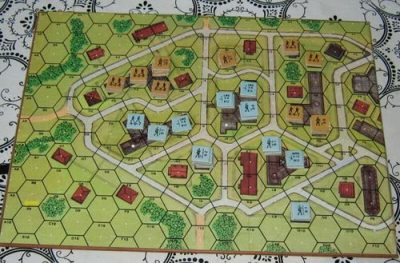
Squad Leader thrusts players into the position of a small unit commander in World War II, challenging them to navigate the intricacies of infantry combat. The game revolves around a hexagonal grid representing the battlefield, with players controlling individual squads and vehicles. Each unit possesses unique abilities, movement ranges, and firepower, which adds depth to the gameplay.
Time was supposed to be two minutes per turn, although Hill admitted that this was inexact and that each game turn is a “module of time, such that events can occur and interact with one another.”
Each turn consists of two player turns, each of which has eight phases:
Rally phase: ‘broken’ units try to rally and broken weapons are repaired)
Prep fire phase: the player whose turn it is may fire on enemy units; units that prep fire cannot move or fire again for the rest of the player’s turn.
Movement phase: the player may move their units on the board.
Defensive fire phase: the other player may fire on units that just moved.
Advancing fire phase: any units that moved may fire, at reduced strength.
Rout phase: any ‘broken’ units must run for cover.
Advance phase: the player whose turn it is may move every unit one hex.,
Close combat phase: any opposing units that start that phase in the same hex engage in close, or melee, combat.
The players’ actions are considered to be semi-simultaneous.
Reception
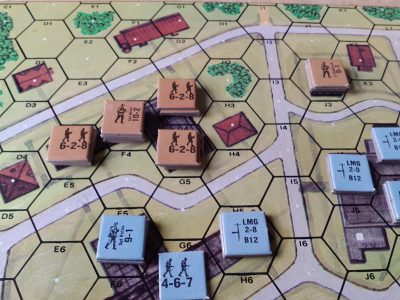
Squad Leader was widely acclaimed on its release and subsequently as well. December 1977 Moves magazine said: “(Avalon Hill) will have a big winner with this. It’s a lot of fun…” Later reviews called it “a hell of a game” and “a deserving winner.”
Squad Leader won the Charles S. Roberts Award for Best Tactical/Operational Game of 1977.
In 1980 The Complete Book of Wargames gave the game a “Very Good” rating and said: “The game is exciting, colorful, and almost endless in its variations…” And that it was one of those rare games that was both an “instant success” and also had “staying power.”
While exact sales figures are not widely available, some estimates state that more than 100,000 copies were sold within the first few years of its release. This popularity sparked Avalon Hill to deliver a number of expansion packs (Crescendo of Doom, Cross of Iron, and G.I.: Anvil of Victory) and single battle modules to an enthusiastic fan base. Charles Roberts, the founder of Avalon Hill said: “Squad Leader’s success surpassed our wildest expectations.”
Impact
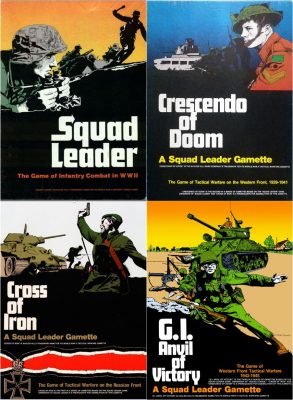
Squad Leader’s effect on gaming history cannot be overstated. The game’s pioneering design and approach to tactical war gaming inspired future generations of game designers. For example, a writer at BoardGameGeek said: “Squad Leader revolutionized the tactical wargaming scene with its rich mechanics and attention to detail.” And Larry Harris, designer of Axis & Allies stated: “Squad Leader was a significant influence on my design approach” and it is “a standard for the industry.”
The game’s influence can be seen, not in just its direct sequels like Advanced Squad Leader and the Close Combat series of computer games, but also in games like Combat Commander and Combat Mission games.
In short, Squad Leader shaped the idea that war gaming is more than traditional historical simulations. But that games could be engaging, immersive, and accessible to a very broad audience. Squad Leader also paved the way hugely diverse and varied range of contemporary games that explore military themes.
Sources:
BoardGameGeek: www.boardgamegeek.com/boardgame/1739/squad-leader and https://boardgamegeek.com/boardgame/746/squad-leader
Charles S. Roberts Awards, 1977
Freeman, Jon. The Complete Book of Wargames. (New York: Simon & Schuster,1980).
Game Designers’ Workshop magazine review, 1978.
Grognard.com: https://grognard.com/titlen.html
Simmons, S. ‘Understanding the Appeal of Squad Leader.’ War Gamer, 2019
Strategy & Tactics magazine review, 1977.
Squad Leader Rulebook, Designer’s Notes, 4th Edition
“Tribute to John Hill 1945-2015”. C3i. No. 28.

I want to preface this by saying how impressed I am with the No Dice No Glory Website. It has well written and informative articles. The amount of output is equally impressive.
On this occasion I felt I would like to correct a perception to one small point appearing in the article.
The game under review, Squad Leader, was evidently ground breaking because its theme was relatively minor tactics when previous board games had a much more strategic emphasis. The article then states that the tactical level had been the province of miniature games and the only period addressed was Napoleonic.
This is not correct. My perception at the time was that Napoleonic was in some way the epitome of the hobby. Partly because of the personalities of the great commanders of the age. At the time I always felt its status also owed something to the fact that to participate you had to have real metal figures, and they needed to be painted to a high and accurate quality.
But it was by no means the only period played pre 1970. During the 1960’s some plastic figures began to be available and they democratised the hobby. Don Featherstone, who wrote what many consider a seminal book on War Games in 1962, had armies of plastic figures in 2 or 3 periods at that time.
When Don organised what he described in the programme as the 3rd UK national National Convention in October 1966 he introduced a tournament for teams of 4 players. Each player played in a different period. The 4 periods were , Ancient, Napoleonic, American Civil War and Modern. At that time the consensus of modern was World War 2. You need to bear in mind WW2 had ended only 21 years before the convention took place. Don himself had taken part. That war was a recent event on many people’s minds. On the tables 2 out of the 4 period used plastic figures.
So before the game Squad Leader was released there were several period being played. Although I would say the Napoleonic period was often viewed as the pinnacle of playing the game.
I dropped out of finishing with the absurd statement that before Squad Leader, miniatures meant Napoleonic games. By 1970 there was Wargames Research Group with ancients and WWII rules, Tractics was published in 1971 for very detailed armor – infantry – artillery rules a long with Fast Rules and Angreif. Charles Grant had published “Battle” well before. Even in board games, SPI’s “Sniper” man to man urban WWII game came out in 1973.
What John Hill’s design did well was add command and control through leader characters that mostly had not been done before.